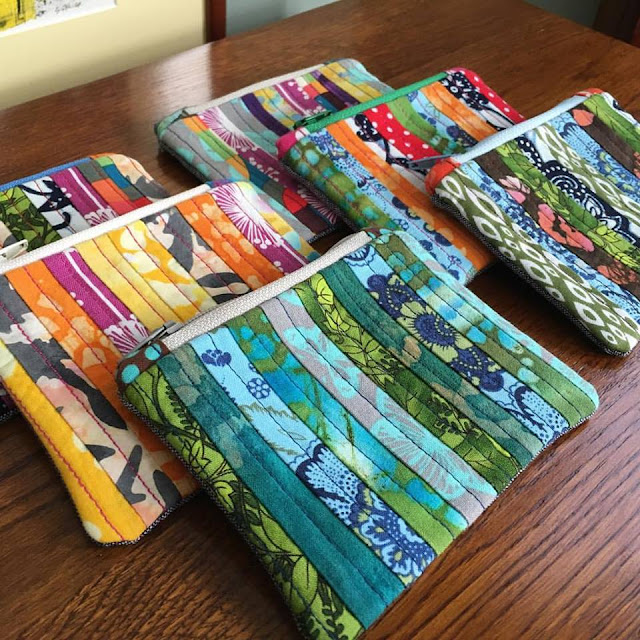Color, Texture & Technique
 I've been listing some new large pendant chokers in the shop this week and I thought it might be fun to share some of them with you. Each piece was glazed and fired in a different way. The versatility of clay makes it so wonderful for me to work with - boredom doesn't stand a chance.
I've been listing some new large pendant chokers in the shop this week and I thought it might be fun to share some of them with you. Each piece was glazed and fired in a different way. The versatility of clay makes it so wonderful for me to work with - boredom doesn't stand a chance.The top piece, though it may be difficult to see in the photo, has billowing crystal-like flecks throughout the blue area. This is due to the high amount of rutile in the blue glaze. It's always a thrill to achieve this look since it's rather unpredictable and depends greatly on the conditions inside the kiln - in this case how fast the kiln cools. The same blue glaze when applied heavily tends to cause imperfections. The pendant below is an example of that, though I tend to view imperfections as stunning one-of-a-kind gifts sent from the heavens above. :) If this glaze combo had been applied to a vertical piece most of the blue glaze would have fallen off and melted into a lovely pool on the kiln shelf. However, since this piece is flat it had nowhere to go and instead created this drop dead gorgeous piece of porcelain perfection. (over the top much?)
 The piece below is a fine example of a reduction glaze. In a nutshell that means that the color of the glaze is dependent upon the atmosphere inside the kiln - how fast oxygen leaves the kiln and how much oxygen remains. When there isn't enough oxygen for the flame to feed off of oxygen is then drawn from the clay body and glaze thus creating brilliant colors (especially reds). If there had been little reduction during the firing of this piece the areas that are red would have been green. Interesting, eh?
The piece below is a fine example of a reduction glaze. In a nutshell that means that the color of the glaze is dependent upon the atmosphere inside the kiln - how fast oxygen leaves the kiln and how much oxygen remains. When there isn't enough oxygen for the flame to feed off of oxygen is then drawn from the clay body and glaze thus creating brilliant colors (especially reds). If there had been little reduction during the firing of this piece the areas that are red would have been green. Interesting, eh? The piece below is part of my Savoy line. A fancy name that simply means that I used a savoy cabbage to create the interesting texture in the clay. I made many of these pieces a while ago and still take delight in glazing them.
The piece below is part of my Savoy line. A fancy name that simply means that I used a savoy cabbage to create the interesting texture in the clay. I made many of these pieces a while ago and still take delight in glazing them. This last piece below has very subtle shading that was achieved by airbrushing several layers of glaze. I used to airbrush glaze all the time on my larger pieces of pottery but have found it less than convenient on my smaller pieces. These large pendants are really the only pieces that can showcase the cool effects that can come from airbrushing and I will be doing some more in the future. This piece is also a great example of a reduction glaze that did not get much reduction. I was hoping for a red blush, instead it stayed green. Which is just fine. I like green too. :)
This last piece below has very subtle shading that was achieved by airbrushing several layers of glaze. I used to airbrush glaze all the time on my larger pieces of pottery but have found it less than convenient on my smaller pieces. These large pendants are really the only pieces that can showcase the cool effects that can come from airbrushing and I will be doing some more in the future. This piece is also a great example of a reduction glaze that did not get much reduction. I was hoping for a red blush, instead it stayed green. Which is just fine. I like green too. :)

Comments
And thank you for the explanation - I learned something new today :)